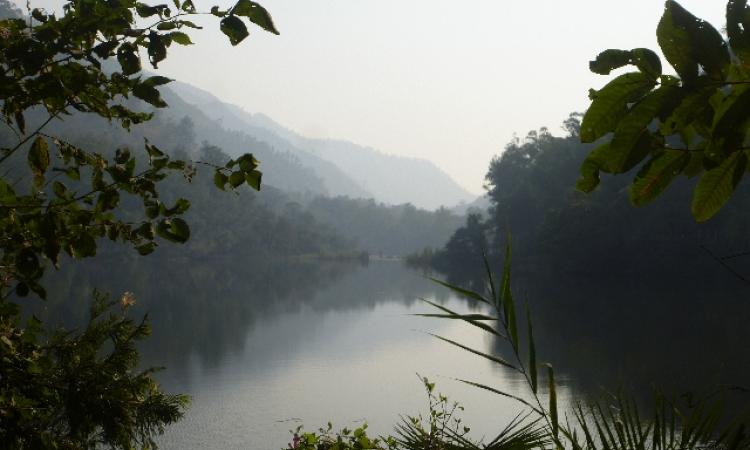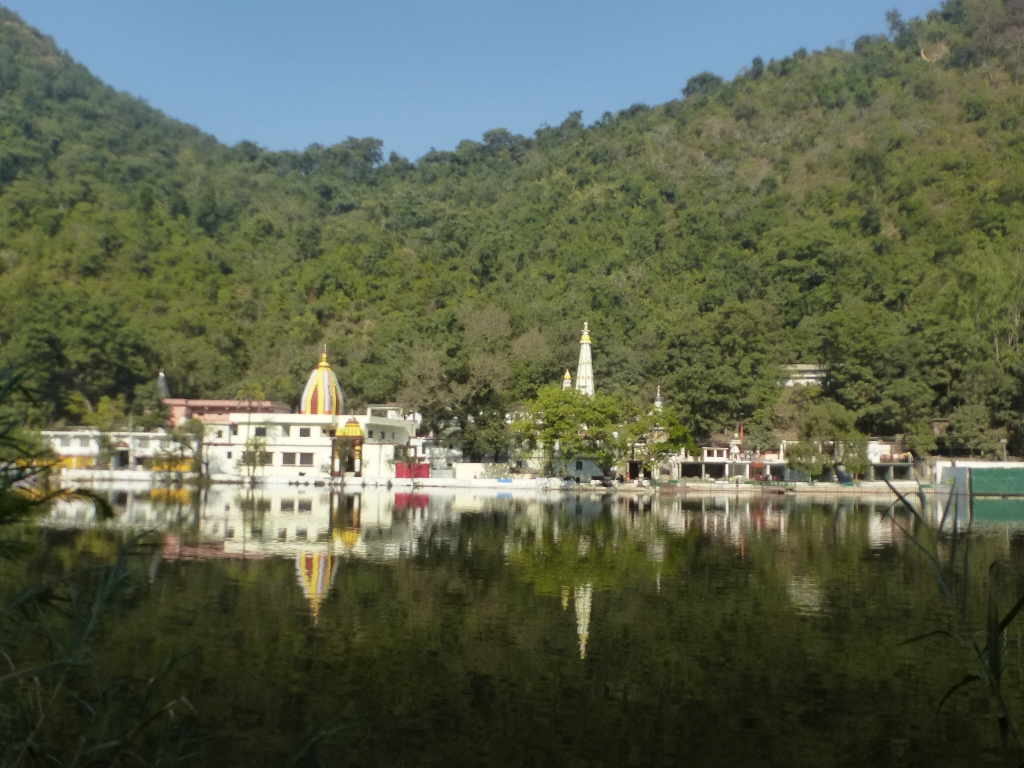
Renuka can be forgiven if she were to feel a bit crazy at times. Like many other women, she could be finding it hard to balance her pious and wild sides.
Renuka lake, located in Sirmaur, the southernmost district of Himachal, is one of the two Ramsar wetlands in Himachal Pradesh. Situated at a relatively low altitude of 620 metres above sea level (msl), it is a part of the Renuka wildlife sanctuary that covers about four square kilometers. Home to more than 400 faunal species, the lake was notified as a Ramsar site in 2005. The lake is also intimately connected with the legend of Renuka Devi, the goddess of the fallen. It is this duality of being a temple site as well as a notified sanctuary that is a threat to the lake today.
Double trouble with dual role
The Renuka is almost physically split into two by these roles. A wildlife enthusiast is bound to feel disappointed at the first encounter with the lake. The entire eastern end of the lake is paved over and built upon. The 'sacred' nature of the lake also means perambulating it is an important part of the rituals. So, to accommodate pilgrims, a tarred 'parikrama' road has been built around the lake.
This reduces as one walks towards the far end of the lake or the western end. It is not unspoilt forest either since it is occupied by a small zoo run by the wildlife department which displays some of the animals found in the area. The lake, however, is rich with life and on my visit there, I encountered 11 species of birds. I was informed the wildlife department had conducted a survey of non-native birds the previous day and had found 10 species of visitors.
However, this wildlife is threatened by the continued tussle between the conflicting demands of both the religion and conservation.
The battle rages on
Ravinder Gupta and Ashwini Kadsholi sit companionably near the lake; a pleasant surprise considering they represent two warring factions. Gupta is the CEO of the Renuka Development Board which seeks to expand the temple construction and Kadsholi is the range officer of the wildlife department which protects the sanctuary. They say they work peacefully together, especially in critical times like the annual Renuka Fair held in November every year. The great influx of people during this short time presents a challenge to the wildlife department. Kadsholi stated that they need to cordon off the mela area from the forest and also recruit locals as security. Despite this, he acknowledged there is nothing they can do about the disturbance to the wildlife due to the noise and lights.
This fair may have begun as a small annual gathering of the pious, but these days it is a five-day extravaganza labelled the International Level Renukaji Fair. Featuring singers, comedians, and other performers from all over the country, the fair showcases cultural programmes that run well past midnight. Durga Ram Sharma of Mahtho, a neighbouring village, told me that this has begun to attract thousands of visitors from far off places. The hotels at Renuka as well as all the neighbouring towns are booked to capacity during the fair.

Not surprisingly, the focus of the Renuka Development Board seems to be on increasing the number of hotels in the immediate vicinity of the lake as well as constructing other fair-related infrastructure. For this to happen, Gupta confirms that the Board has initiated a process called 'rationalisation' which seeks to deprive the lake and it's surrounding forests of their protected status. With the fair dominating discourse around the Renuka lake, it is unlikely that efforts to maintain the forests around the lake will remain successful for long.
The lake is also being threatened by the dam planned in the neighbourhood. Kadsholi says that 49 hectares (ha) of the sanctuary has been appropriated for the dam. Of this, once the construction is completed, the sanctuary will be handed back 12 ha of the now-submerged land.
Gupta is very clear that the rights of the temple come before all else. “The temple was here before the lake became a Ramsar site,” he says. “Yes, but the forest was there before the temple,” I forbear to retort.
/articles/wing-and-prayer